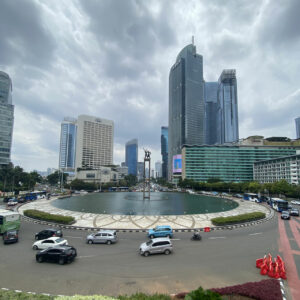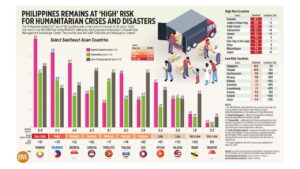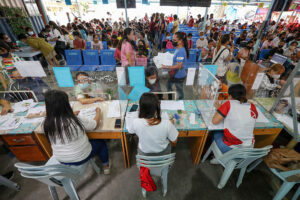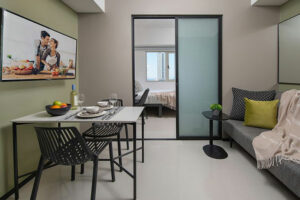A trip to Jakarta: The Big Apple in Southeast Asia

By John Victor D. Ordoñez, Reporter
JAKARTA, Indonesia — People consider Bali as the premier travel destination in Indonesia, but the bustling city of Jakarta should not be overlooked.
“The Big Apple, the city that never sleeps is not just in New York, but exists right here in Jakarta,” Hari Wibowo, who heads the Marketing and Attraction Division of the Tourism and Creative Economy Office of the Jakarta provincial government, told BusinessWorld earlier this month in Jakarta during a dinner with media representatives from the Philippines.
“Name a type of business and the city is sure to have it.”
Jakarta is a city that boasts of modern innovations while remembering its history as a former Dutch colony.
One could get lost in the endless towering skyscrapers, state-of-the-art malls, and historical monuments that take you back to the 17th century.
CULTURAL ACTIVITIESMy first day exploring the city started on an early Sunday morning when I witnessed Jakarta’s “car-free day.”
Every Sunday, city roads are closed to encourage people to exercise and ride bikes to reduce pollution.
The first stop of our cultural tour of Jakarta was the Kota Tua, which translates to Old Town in Indonesian. The area is a historic district that is filled with colonial-era buildings and cobblestone streets that reflect 17th-century Dutch architecture.
The town also had world-class art galleries featuring both modern and classical pieces in their collections.
For lunch, we headed to the residence of Ethys Mayoshi, owner of Batik Gobang, a traditional Indonesian garment shop in West Jakarta. There, we were introduced to a spread of Indonesian cuisine staples such as nasi goreng, pempek, and satay skewers.
Ms. Mayoshi then walked us through how to craft our own batik designs by drawing outlines of different flowers on white cloth and then tracing them in with melted wax.
The next stop on our tour was Indonesia’s National Monument, also known asMonas, which stands at a towering 433 feet.
The monument, which finished construction in 1975, commemorates Indonesia’s 1949 independence from Dutch occupation.
We were brought to the top of the obelisk in Central Jakarta through its built-in elevator, which gave us an unobstructed view of the city’s skyline.
MODERN CITY SPOTSIt is not hard to get to where you need to be in the city thanks to its integrated public transportation system.
We hopped on Jakarta’s new train and bus transit systems, which are both accessed through the all-in-oneJaklingko card. The card can also be used for various transactions at selected establishments around Indonesia.
After getting off at our last bust stop for the day, we explored the PT Sarinah department store, a state-owned establishment that showcases local businesses.
The store, which opened in 1966, was named after President Sukarno’s childhood nanny. It was made in response to soaring inflation at the time.
The PT Sarinah was the first skyscraper built in Jakarta and has undergone several renovations.
There visitors can shop for traditional Indonesian garments and enjoy dining at restaurants that offer both local cuisine and food from around the world.
We particularly enjoyed a scoop of handcrafted, artisan ice cream from Honest Spoon.
The next stop in our Jakarta shopping expedition was the Thamrin City Mall, which is located beside Grand Indonesia and Plaza Indonesia — two of Jakarta’s biggest shopping centers.
There we experienced bargaining for deals with the little Bahasa Indonesian we had learned. Some of our finds at the market included traditional batik polos and tops, as well as modern iterations of the fabric used in batik kimonos.
THOUSAND ISLANDSTravelers can also enjoy an island paradise experience which is just a boat ride away from mainland Jakarta.
Kepulauan Seribu — which translates to the Thousand Islands — is a chain of about 342 islands and beaches stretching 45 kilometers into the Java Sea. The islands boast white sand beaches that can rival some of the best in Southeast Asia.
Tidung Island’sLove Bridgeis a popular spot for hopeless romantics. Locals believe that a person that jumps into the water from the bridge seven times in a row would soon find their soulmate.
PRIME URBAN DESTINATIONWe wrapped up the short tour of Jakarta with dinner at the Tugu Kunstkrin Paleis, which translates to “art circle palace,” a high-end Indonesian restaurant that also has a rich history dating to Indonesia’s colonial past.
The establishment previously served as an immigration office for central Jakarta until the late 1990s. It was then converted into a world-class art gallery that exhibited iconic works by artists such as Vincent Van Gogh and Pablo Picasso.
The restaurant’s interior reflects old Batavia, — Indonesia’s name under Dutch occupation — with antique paintings and accouterments decorating the place.
The restaurant’s menu includes Indonesian classics such as Tempeh, deep-fried soybean cakes, and Satay Lembt Betawi, skewers of spicy minced beef mixed with coconut.
At the dinner, Mr. Wibowo said Jakarta’s tourism office aims to promote the city as a prime urban destination for both business and leisure travelers.
“We see our city as the place to be doing business and leisure as we have many new establishments that tourists can look forward to,” he said at the venue.
Even though tourism numbers are still far from pre-pandemic levels, the easing of travel and health restrictions makes him hopeful that more tourists will be coming to Jakarta, he said.
Jakarta is known for attracting art and music enthusiasts as it routinely holds the Jakarta International Java Jazz Festival, one of the largest jazz festivals in the world.
The city also boasts the largest stadium complex with a retractable roof in Asia — the Jakarta International Stadium which has a seating capacity of 82,000 people.
VISITOR ARRIVALSLast year, Jakarta reported 14,890 visitor arrivals from the Philippines, significantly more than the 2,540 in 2021, according to data from the Jakarta provincial government.
This is still a far cry from the 57,593 Filipinos who visited Jakarta in 2018 and 2019, before the coronavirus pandemic.
“Hopefully, with more collaborative projects between our two countries this year, we hope to have more Filipino tourists in Jakarta,” Mr. Wibowo said.
Indonesia attracted 5.47 million foreign visitors last year, more than three times the number a year earlier. However, this is still well below the 16.1 million visitors it welcomed in 2019.
The Southeast Asian nation is targeting attracting between 3.5 and 7.4 million foreign tourists this year.
BusinessWorld took part in the Indonesian Embassy’s Jakarta Familiarization trip on Feb. 4-8.




